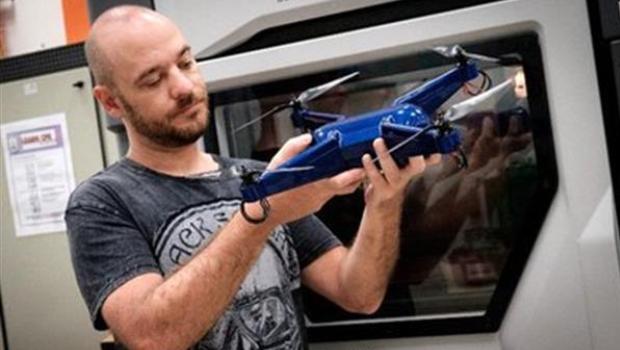Stratasys and the researchers at Nanyang University have joined hands to create a fly ready drone with the help of aerospace grade material. It won’t be just another drone that has already been created by various other companies but it will be the first completely operational quadrocopter which will be 3D printed in ULTEM 9085.
Planned and 3D printed by Philip Keane, a NTU PhD competitor from the School of Mechanical and Aerospace Engineering, the automaton can bolster more than 60 kg of suspended weight, and components installed gadgets equipped for withstanding to a great degree high temperatures. The venture was together created by NTU’s Singapore Center for 3D Printing (SC3DP) and Stratasys Asia Pacific, a backup of the main 3D printing and added substance fabricating arrangements organization Stratasys Ltd.
The quadrocopter is especially outstanding for its special electronic segments. Regularly installed gadgets show a test for 3D printers, as most hardware can’t withstand the high temperatures of the printing procedure, which reach more than 160 degrees Celsius. Consequently, business review gadgets were uncommonly altered and installed in the automaton at key stages all through the printing procedure.
“One of the hardest difficulties was to discover electronic parts that could hypothetically survive the high-temperature printing process — we needed to add some warmth sealing changes to the segments to guarantee they could last. This included adding new segments to the printed circuit sheets furthermore planning custom lodgings,” Keane said.
The whole procedure ended up being careful however effective. Printing the automaton took under 14 hours, including three delays for putting the gadgets inside the undercarriage. “I additionally needed to manage tight time limitations as a portion of the segments couldn’t get by in the warmth for over 20 minutes,” Keane clarified. Engines and propellers were mounted after the whole case was finished.
The choice to 3D print utilizing ULTEM 9085 was additionally critical, since the creation review thermoplastic is known for its high-quality to weight proportion and FST rating, and along these lines appropriate to the aeronautic trade. Moreover, “the lodgings which were pre-imprinted in ULTEM 9085 additionally give a level surface to the 3D printer to keep printing them.”
